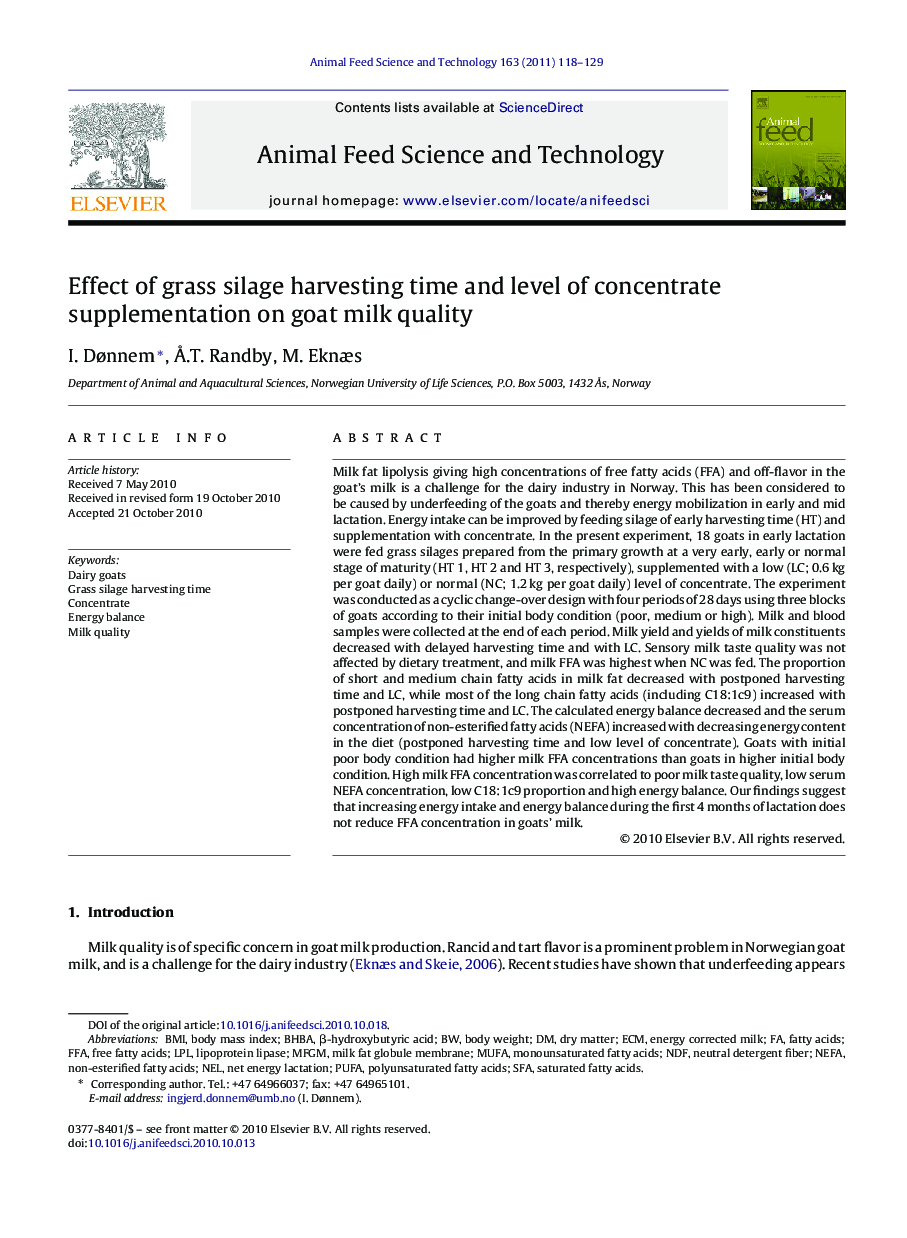| Article ID | Journal | Published Year | Pages | File Type |
|---|---|---|---|---|
| 8492809 | Animal Feed Science and Technology | 2011 | 12 Pages |
Abstract
Milk fat lipolysis giving high concentrations of free fatty acids (FFA) and off-flavor in the goat's milk is a challenge for the dairy industry in Norway. This has been considered to be caused by underfeeding of the goats and thereby energy mobilization in early and mid lactation. Energy intake can be improved by feeding silage of early harvesting time (HT) and supplementation with concentrate. In the present experiment, 18 goats in early lactation were fed grass silages prepared from the primary growth at a very early, early or normal stage of maturity (HT 1, HT 2 and HT 3, respectively), supplemented with a low (LC; 0.6Â kg per goat daily) or normal (NC; 1.2Â kg per goat daily) level of concentrate. The experiment was conducted as a cyclic change-over design with four periods of 28 days using three blocks of goats according to their initial body condition (poor, medium or high). Milk and blood samples were collected at the end of each period. Milk yield and yields of milk constituents decreased with delayed harvesting time and with LC. Sensory milk taste quality was not affected by dietary treatment, and milk FFA was highest when NC was fed. The proportion of short and medium chain fatty acids in milk fat decreased with postponed harvesting time and LC, while most of the long chain fatty acids (including C18:1c9) increased with postponed harvesting time and LC. The calculated energy balance decreased and the serum concentration of non-esterified fatty acids (NEFA) increased with decreasing energy content in the diet (postponed harvesting time and low level of concentrate). Goats with initial poor body condition had higher milk FFA concentrations than goats in higher initial body condition. High milk FFA concentration was correlated to poor milk taste quality, low serum NEFA concentration, low C18:1c9 proportion and high energy balance. Our findings suggest that increasing energy intake and energy balance during the first 4 months of lactation does not reduce FFA concentration in goats' milk.
Keywords
ECMBHBANDFSFAMUFALPLNEFAMFGMFFAβ-hydroxybutyric acidPolyunsaturated fatty acidsPUFAFatty acidsFree fatty acidssaturated fatty acidsnon-esterified fatty acidsmonounsaturated fatty acidsenergy corrected milkDairy goatsEnergy balanceConcentrateNELbody mass indexBMImilk fat globule membraneneutral detergent fiberLipoprotein lipasedry matterbody weightMilk quality
Related Topics
Life Sciences
Agricultural and Biological Sciences
Animal Science and Zoology
Authors
I. Dønnem, Ã
.T. Randby, M. Eknæs,
